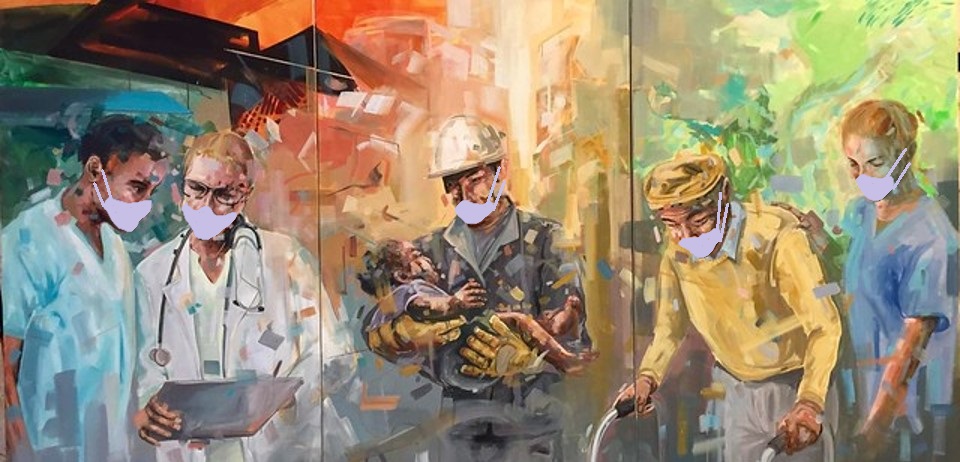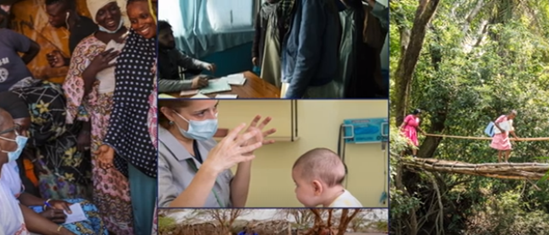Health Workforce at #WHA78
An eventful May, capped by the World Health Assembly, has demonstrated global demand for strategic health and care workforce data, normative guidance and country support. Against health systems under intense pressure and financing tightened, including by ODA cuts (insights from our panel of economists), Member States reaffirmed their support for WHO and for multilateralism, adopted the historic pandemic agreement (Article 7: Health and care workforce), and passed the World Health Assembly Resolution WHA78.16 on Accelerating action on the global health and care workforce by 2030. Learn more on health workforce strategy & global governance
Additionally, Member States noted the Interim report of the Expert Advisory Group on the WHO Global Code of Practice on the International Recruitment of Health Personnel and requested the Director-General to facilitate regional consultations with Member States in advance of its finalization and submission to the Seventy-ninth World Health Assembly through the Executive Board at its 158th session. WHO conducted six regional consultations between June and October 2025, and the Expert Advisory Group will meet for the fourth time from 12-13 November 2025. Learn more on health workforce migration
Global impact of official development assistance cuts
The 2025 decisions by members of the Organisation for Economic Co-operation and Development (OECD) Development Assistance Committee to freeze or cut official development assistance has created a significant disruption in the global aid ecosystem and national political agendas of low- and-middle income countries . This situation has had immediate consequences for the availability of critical health services, commodities and health and care workers across countries.
A March 2025 WHO rapid assessment found that over half (63%) of WHO country offices reported job-related effects on health and care workers in countries. Budget cuts are expected to reduce countries’ ability to absorb new health and care workers, worsening existing shortages. With reduced absorptive capacity, health systems in Africa are projected to see an increase in the health and care workforce shortage of 600,000 health and care workers by 2030, compared to earlier estimates. Learn more in this blog from our panel of economists.
Definitions & Figures
Who are health and care workers?
- Health worker - Health workers are all people primarily engaged in actions with the primary intent of enhancing health. For health workers, the relevant ISCO codes are generally found within the "Health Professionals" (Sub-Major Group 22) and "Health Associate Professionals" (Minor Group 325) categories, with more specific unit groups depending on the type of health work.
- Heath care assistant (ISCO-08 code: 5321) - Institution-based personal care workers who provide direct personal care and assistance with activities of daily living to patients and residents in a variety of health care settings such as hospitals, clinics and residential nursing care facilities. They generally work in implementation of established care plans and practices, and under the direct supervision of medical, nursing or other health professionals or associate professionals.
- Home-based personal care workers (ISCO-08 code: 5322) who provide routine personal care and assistance with activities of daily living to persons who are in need of such care due to effects of ageing, illness, injury, or other physical or mental conditions, in private homes and other independent residential settings.
Key figures
The estimated stock of health workers now exceeds 70 million. Shortage estimates decreased steadily since the Global Strategy adoption in 2026, trends that may be linked to investment decisions, the adoption of evidence-based policies and improved data availability.
The pace of progress has slowed, however, and masks diverging trends across and within regions, prompting an upward adjustment to the projected workforce shortage by 2030 to 11 million (compared to the 2022 estimate of a projected 10 million shortage by 2030).
Women comprise 67% of the global health workforce.
Technical briefs
External publications
AllThe education and training of the public health workforce: working at the intersection of the WFPHA Global Charter and the WHO Roadmap
Is Australia’s current public health education fit-for-purpose? A reflection on past, present and future
Competency-based education and training for Community Health Workers: a scoping review
Publications
All →Governance for public health across the health and allied sectors: a report to guide country-level institutional...
The diverse public health challenges require multisectoral, integrated action, supported by robust and well-coordinated governance that...
The WISN application is a software tool for recording, analyzing, and reporting data related to staffing status and needs at health facilities. Learning...
State of the world's nursing report 2025
Central to the achievement of the Agenda for Sustainable Development is an adequate, equitably distributed and fully supported health workforce. Nurses...
Health and care workforce planning tools
A rapid review of health and care workforce planning tools is published in collaboration with the PAHO/WHO Collaborating Centre on Health...
Technical documents
All->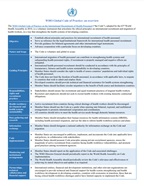
WHO Global Code of Practice: an overview
This document is an overview of the WHO Global Code of Practice on the International Recruitment of Health Personnel.
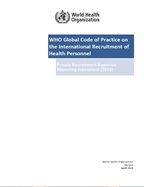
2024 Private recruitment agencies reporting instrument on the WHO Global Code of Practice on the International...
In alignment with the WHO Global Code of Practice on the International Recruitment of Health Personnel, the 2024 Private Recruitment Agencies Reporting...
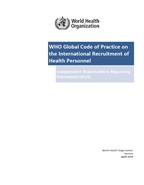
2024 Independent Stakeholders Reporting Instrument on the WHO Global Code of Practice on the International...
In alignment with the WHO Global Code of Practice on the International Recruitment of Health Personnel, the 2024 Independent Stakeholders Reporting Instrument...
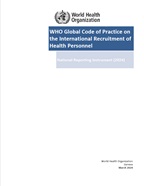
2024 National Reporting Instrument on the WHO Global Code of Practice on the International Recruitment...
The 2024 National Reporting Instrument for Member States is intended for use by designated national authorities to report on health personnel migration...
Key publications
All->World Health Assembly resolutions
- WHA75.17 – Human resources for health (Working for Health (2022-2030) Action Plan, Global health and care worker compact) (2022)
- WHA A75/15 - Global strategy on human resources for health: workforce 2030 - Report by the Director-General
- WHA74.14 - Protecting, safeguarding and investing in the health and care workforce (2021)
- WHA74.15 - Strengthening nursing and midwifery: investments in education, jobs, leadership and service delivery (2021)
- WHA73.9 - Report of the WHO Expert Advisory Group on the Relevance and Effectiveness of the WHO Global Code of Practice on the International Recruitment of Health Personnel (2020)
- WHA73.30 - Human resources for health (2020)
- WHA72.3 - Community health workers delivering primary health care: opportunities and challenges) (2019
- WHA72.19 - 2020: International Year of the Nurse and the Midwife) (2019
- EB140.3 - Human resources for health and implementation of the outcomes of the United Nations’ High-Level Commission on Health Employment and Economic Growth (2017)
- WHA70.6 - Human resources for health and implementation of the outcomes of the United Nations’ High-Level Commission on Health Employment and Economic Growth (2017)
- WHA 69.19 - Global strategy on human resources for health: workforce 2030 (2016)
- WHA 63.16 - WHO Global Code of Practice on the International Recruitment of Health Personnel (2010)

/health-workforce-(hwf)/hrh-policies-and-standards-(hwp)/20250512-sown-whpa.tmb-549v.jpg?sfvrsn=c3cb6a71_1)
